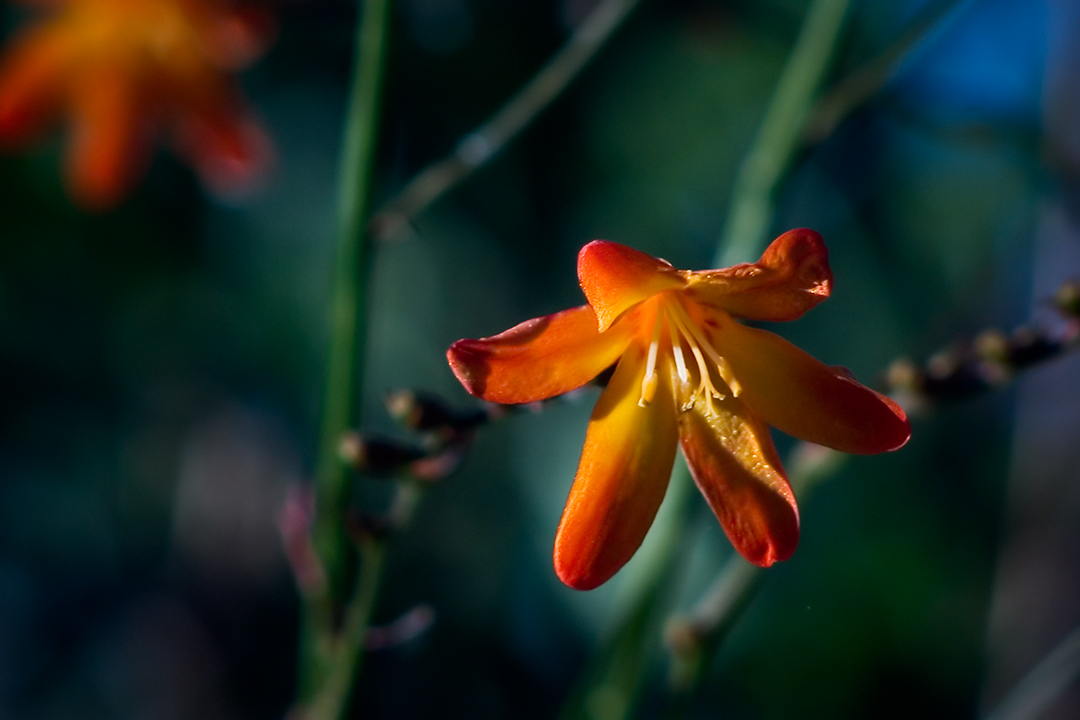Crocosmia Flowers and environmentally correct planting
Not to be confused with a crocus this beautiful plant is one to consider for your Pacific Northwest garden.
 Let me introduce you to the crocosmia flower. Its name looks much like the crocus but it is actually a member of the Iris family. Over 400 varieties of crocosmia have been cultivated to date. Crocosmia are hardy and easy to grow. And, like many of our flowers in the Pacific Northwest, they originally came from South Africa. Many were brought from there to England and hybridized. If they can grow in England, they will generally grow very well here in the Seattle area.
Let me introduce you to the crocosmia flower. Its name looks much like the crocus but it is actually a member of the Iris family. Over 400 varieties of crocosmia have been cultivated to date. Crocosmia are hardy and easy to grow. And, like many of our flowers in the Pacific Northwest, they originally came from South Africa. Many were brought from there to England and hybridized. If they can grow in England, they will generally grow very well here in the Seattle area.
Don't Wait to Enjoy Your Perfect Outdoor Retreat!
Schedule your consultation today and let's bring your vision to life.
425.803.9881
Crocosmia is the perfect addition to a Northwest garden
The crocosmia are a beautiful and stunning flower that grow from 2 to 3.5 feet tall. With its long sword-shaped leaves and vivid flowers, the crocosmia looks especially nice when positioned near large rock or a walkway, or at the base of a tree. Crocosmia flowers are the perfect addition to a Northwest garden as they attract humming birds and add splashes of red, orange, and yellow colors to the landscape. Year after year I marvel at the vivid splash of color they add to our garden. They prefer shade, so plan accordingly, but ensure they get plenty of water as well.
When should you plant? Right now...springtime! It might mean you’ll have to dodge a few April raindrops, but come summer you’ll be glad you did. Be sure to give your crocosmia plant some space as it grows -- it may hide smaller plants that live close by. Crocosmia flowers are happiest and will flower most prolifically when crowded together with other crocosmia. Like most bulbs, they prefer good drainage so be sure your garden has a good hydro-foundation. They also like a good amount of mulch and organic material, or some natural fertilizer which is lower in nitrogen; bone meal is a good choice. They are "heavy" feeders and like to be in rich soil.
Some crocosmia plants, such as the Montbretia, love the Pacific Northwest so much that they could become invasive. This means they can over-take your garden, smothering other plants. We believe strongly in environmentally correct planting so please, do not plant crocosmia flowers or other invasive plants in wide open or wooded areas. While they don't necessarily need to be contained (like many Bamboos), they can spread over time so exercise a little bit of caution when planting. Consider placing in smaller well defined beds for example that has definite boundaries where the plant cannot “escape”.
Crocosmia grow from corms, which are similar in appearance to a bulb. As they mature, the corms will grow, multiply and produce bigger and bigger clumps. When you divide the plant in the fall, you will want to move them to a new bed (or give them to your neighbors) and not dry them out as you might a dahlia. Even small corms will continue to grow and multiply. Once planted, they could be hard to get rid of, but I'm not sure why you would want to. If you are concerned about them spreading, consider keeping them in a container which will help with this. Protect from frost by covering with mulch.
Please contact Environmental Construction, Inc at (425)-803-9881 if you want to talk about seasonal plantings for color in your garden. We would love to discuss environmentally correct plantings and work with you to create a beautiful garden design that you will enjoy for years.
Category: Northwest Gardening
Ready to Reconnect with Nature?
Contact us now to design and build your dream landscape with eco-friendly materials.
425.803.9881

